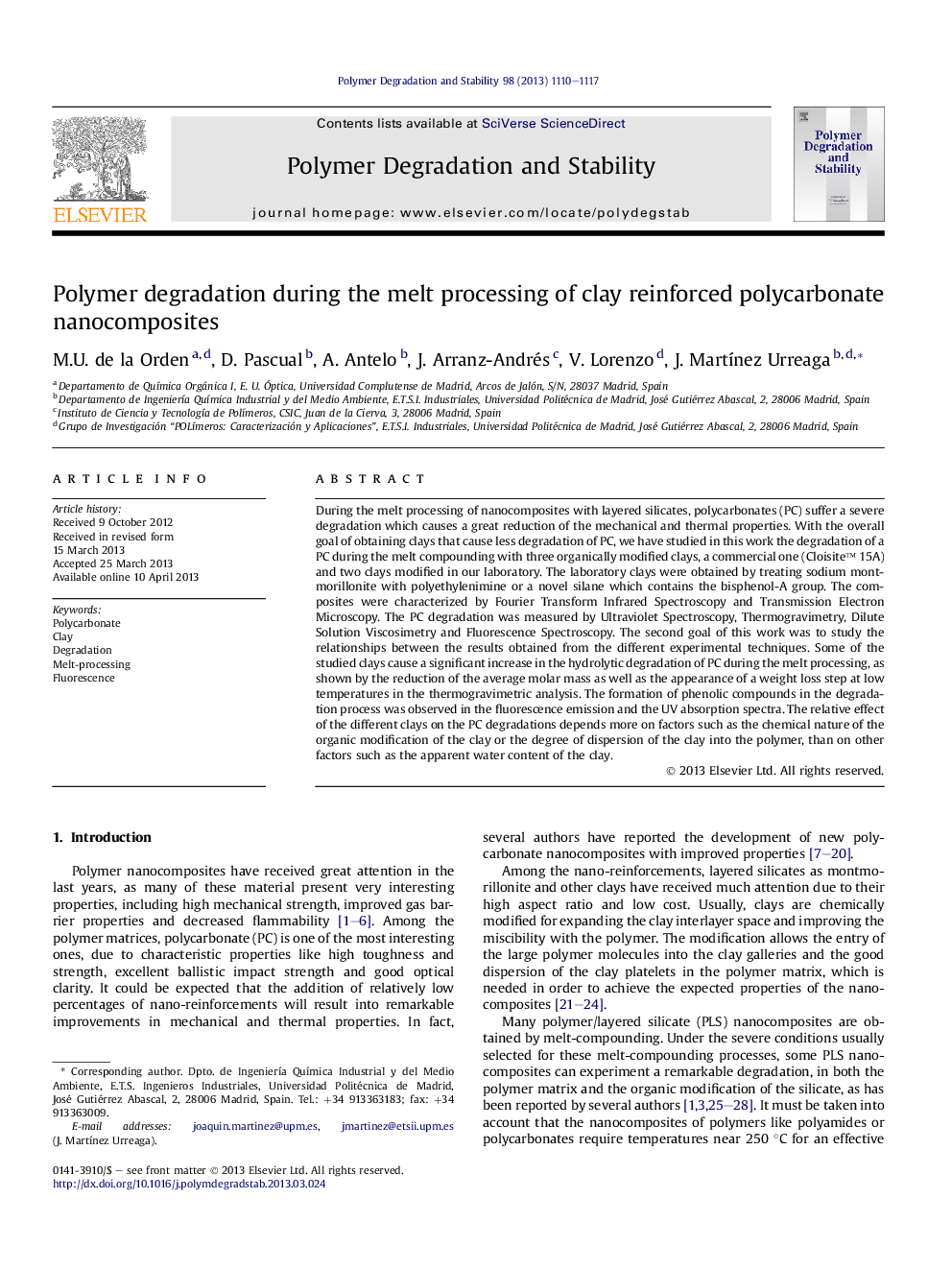| Article ID | Journal | Published Year | Pages | File Type |
|---|---|---|---|---|
| 5202124 | Polymer Degradation and Stability | 2013 | 8 Pages |
During the melt processing of nanocomposites with layered silicates, polycarbonates (PC) suffer a severe degradation which causes a great reduction of the mechanical and thermal properties. With the overall goal of obtaining clays that cause less degradation of PC, we have studied in this work the degradation of a PC during the melt compounding with three organically modified clays, a commercial one (Cloisite⢠15A) and two clays modified in our laboratory. The laboratory clays were obtained by treating sodium montmorillonite with polyethylenimine or a novel silane which contains the bisphenol-A group. The composites were characterized by Fourier Transform Infrared Spectroscopy and Transmission Electron Microscopy. The PC degradation was measured by Ultraviolet Spectroscopy, Thermogravimetry, Dilute Solution Viscosimetry and Fluorescence Spectroscopy. The second goal of this work was to study the relationships between the results obtained from the different experimental techniques. Some of the studied clays cause a significant increase in the hydrolytic degradation of PC during the melt processing, as shown by the reduction of the average molar mass as well as the appearance of a weight loss step at low temperatures in the thermogravimetric analysis. The formation of phenolic compounds in the degradation process was observed in the fluorescence emission and the UV absorption spectra. The relative effect of the different clays on the PC degradations depends more on factors such as the chemical nature of the organic modification of the clay or the degree of dispersion of the clay into the polymer, than on other factors such as the apparent water content of the clay.
